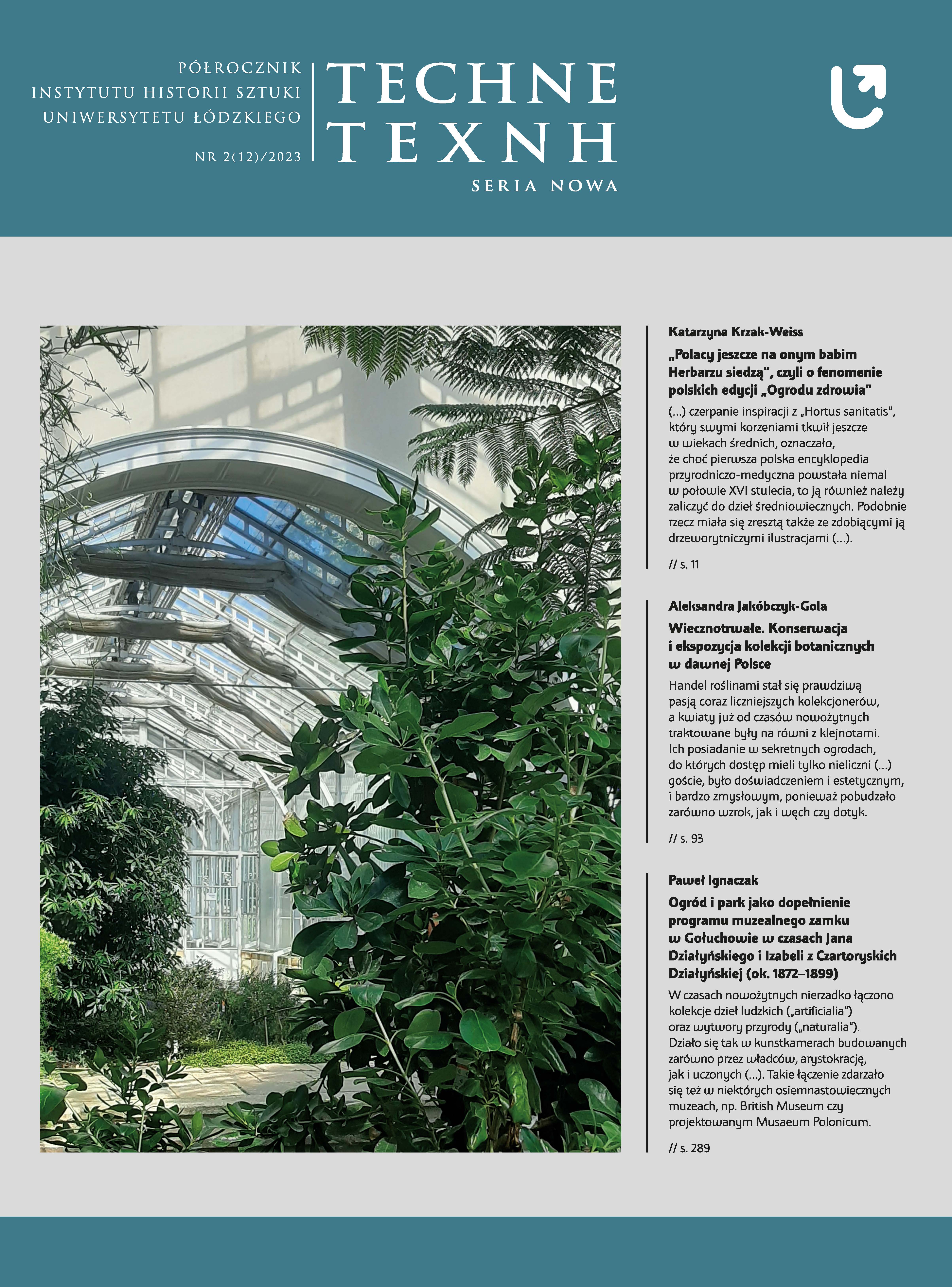„Koło pałacu misterne kwatery, drzewa pomarańczowe, kwiecia rozliczne” Sztuka ogrodowa w świetle polskich relacji podróżniczych z 2. połowy XVII wieku
“Near the palace there are elaborate quarters, orange trees, numerous flowers.” Garden art in the light of Polish travel accounts from the second half of the 17th century
Author(s): Anna MarkiewiczSubject(s): History, Fine Arts / Performing Arts, Special Historiographies:, 17th Century
Published by: Wydawnictwo Uniwersytetu Łódzkiego
Keywords: gardens; grand tour; educational journey; Rome; Paris; Versailles
Summary/Abstract: The study addresses the issue of the image of gardens recorded in the diaries and correspondence of noblemen and magnates from the Polish-Lithuanian Commonwealth who went on educational trips around Europe in the second half of the 17th century. In the Baroque era, garden art undoubtedly flourished, and visiting palaces and gardens throughout Europe was part of the grand tour program and one of the most important goals of similar trips. According to the concept of such journeys, noble young men not only attended classes at prestigious academies in Paris and Rome, learned foreign languages, music and fencing, but also visited noteworthy manors, residences, palaces and the most magnificent gardens throughout Europe. At each stage of the educational journey, travelers visited palace gardens, orangeries, parks and university gardens, and recorded their impressions on the pages of their travel notebooks.For travelers, the gardens were a space for idyllic rest, recreation and social contacts, at the same time providing aesthetic values and emphasizing the prestige of the residence and the splendor of power; it was an important element of the residential complex and a place for presenting the collection. In the mid-17th century travel reports were dominated by impressions from Italian gardens, and only in the following decades did French garden art of the era of Louis XIV gradually take over. At the end of the century, travel records were dominated by Versailles and other dazzling creations by André Le Nôtre, full of elaborate quarters and sophisticated fountains. Reflection on travel accounts from the Baroque era allows us to better understand the perception of gardens by Polish noblemen and magnates, but it is also a valuable contribution to the cultural transfer taking place through travel. The visited gardens became a place to gain knowledge about flora, and during the voyage, exotic plants were purchased and experienced gardeners were engaged. Many years after returning from their journey, the once travelers used French or Italian patterns when arranging the gardens of their manors and palaces.
Journal: TECHNE. Seria Nowa
- Issue Year: 2/2023
- Issue No: 12
- Page Range: 115-139
- Page Count: 26
- Language: Polish

